Now that winter is here, you might be tempted to hunker down and limit your workouts to inside. But you’d be doing yourself a disservice if you choose to stay indoors when it gets cold. You’ll miss out on fresh air, sunshine (and accompanying Vitamin D) and the physical and mental benefits of spending time outside. Studies suggest that being in natural environments can be associated with mental health benefits. And spending just 20 minutes in nature can help lower stress hormone levels, according to a 2019 study published in Frontiers in Psychology.
Basically, there’s little reason to stay inside.
To get you inspired to get outside, we’ve come up with a list of 10 ways that nature can make your outdoor movement more fun and creative. So put on the proper layers, get moving and congratulate yourself for getting outside while you revel in fresh air.
Hit Your Local Park or Playground
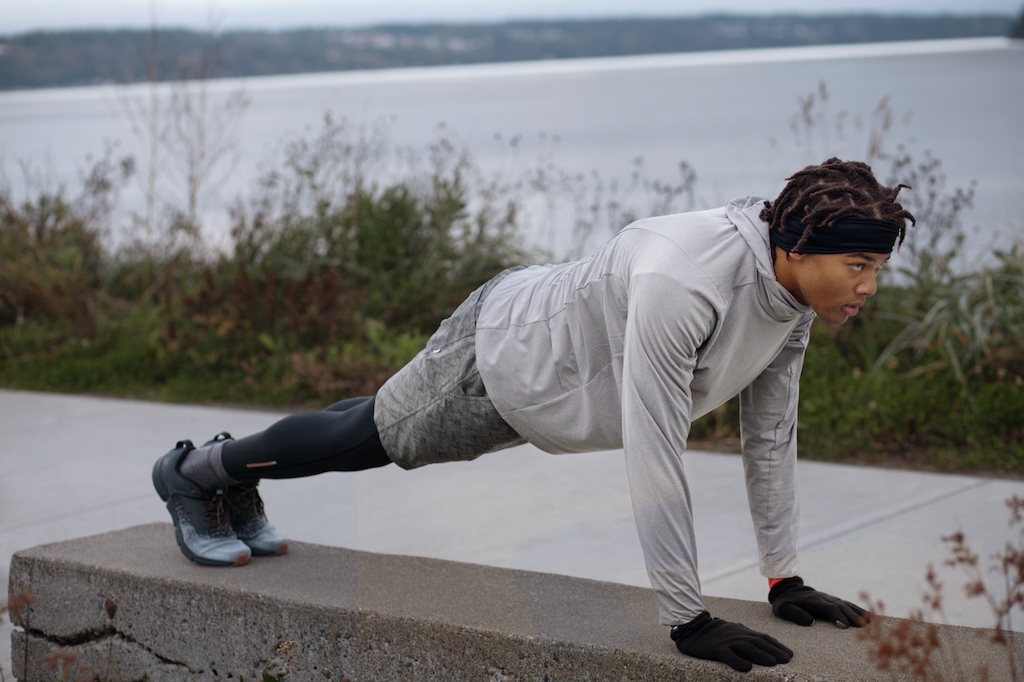
Find a local park or playground, and you’ll likely have everything you need for a challenging workout. The local jungle gym may be a magnet for kids in the summer. But in the winter, you’ll have free rein and a chance to get in plenty of movement. Try push-ups or tricep dips using a park bench. Other options include hanging from the monkey bars, climbing up a pole or challenging your balance by crawling up a metal dome. (Be sure to wear gloves.) See if you can swing one hand at a time all the way across the monkey bars. Have kids? Play tag on the jungle gym and try to keep up with them!
Incorporate Logs Into Your Workout

Logs offer an excellent, versatile way to play in nature. You likely won’t have to go far to find them; check out a local park, greenbelt trails or beach. Walk along deadfall to challenge your balance. Step one leg up on a log for a lunge and get a deep stretch into your hip flexors. Place your hands on a log for a modified push-up. Or, if there are several logs together, get playful and jump from one to another or create an obstacle course. (Park benches work just as well.)
Work the Angles

Photo Credit: Andrew Bydlon.
One cool, built-in element of the outdoors is uneven ground and hills. Slopes naturally increase the challenge and intensity of any activity. Going uphill and downhill on a 20-minute walk will have you huffing and puffing sooner than you think. According to biomechanist Katy Bowman in her book Move Your DNA, more up and down introduces more variation in ankle, knee and hip use, and helps stretch your calves and Achilles tendons.
Use Trees as Props
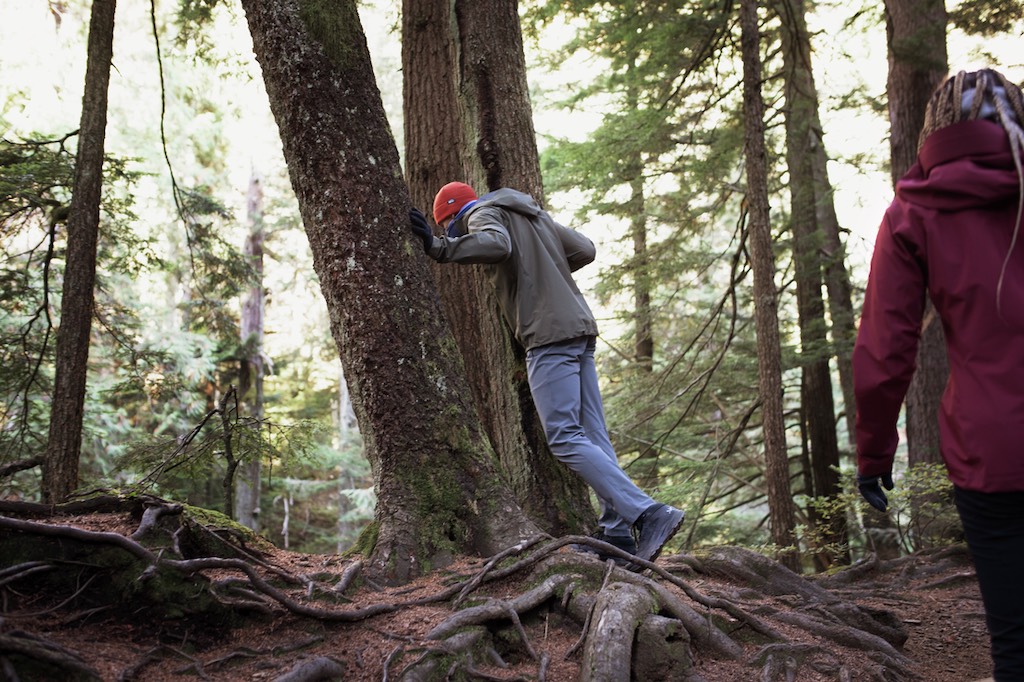 Trees are one of nature’s most magnificent creations. Tree trunks are an easy prop to use for both stretching and strength exercises. Wrap one hand around the trunk, then lean and twist away to open shoulders aching from screen time. Make sure you stretch both sides.
Trees are one of nature’s most magnificent creations. Tree trunks are an easy prop to use for both stretching and strength exercises. Wrap one hand around the trunk, then lean and twist away to open shoulders aching from screen time. Make sure you stretch both sides.
You also can also prop the ball of your foot up against the trunk for an Achilles tendon and calf stretch. If you’re working on push-ups, do them against a tree for a modified version that doesn’t require you to get your hands muddy or wet.
Take a Walk in Snow
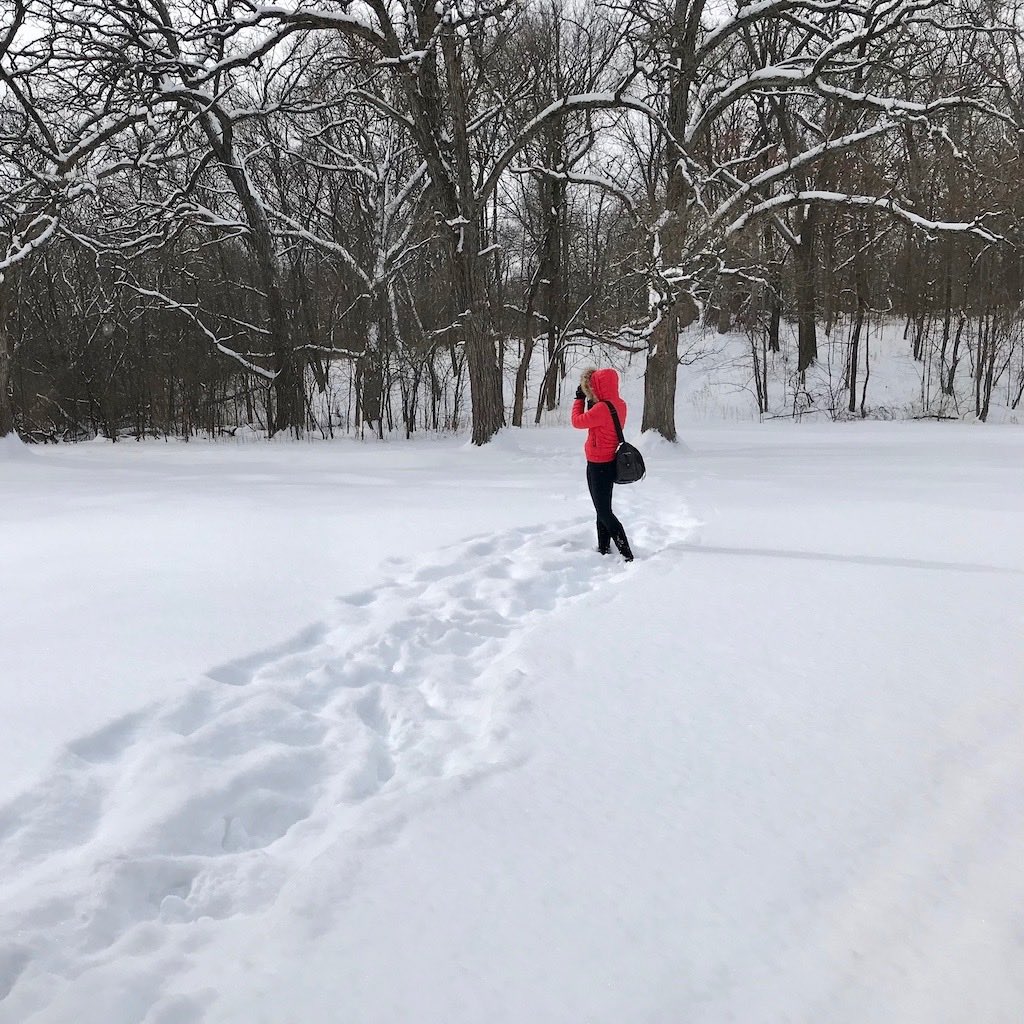 Walking in snow is an excellent challenge that can help you improve balance and increase strength. Bundle up and explore your neighborhood. Admire the winter wonderland as you navigate soft, crunchy or icy terrain. Just be sure to wear the right gear to stay warm and wear shoes with good traction. (Learn tips on how to layer up to stay warm or how to choose and use gaiters to keep the snow out of your shoes). P.S.: Hiking in snow when you probably should have used snowshoes or skis for flotation counts as the ultimate movement and workout. (Read more about the joys of postholing).
Walking in snow is an excellent challenge that can help you improve balance and increase strength. Bundle up and explore your neighborhood. Admire the winter wonderland as you navigate soft, crunchy or icy terrain. Just be sure to wear the right gear to stay warm and wear shoes with good traction. (Learn tips on how to layer up to stay warm or how to choose and use gaiters to keep the snow out of your shoes). P.S.: Hiking in snow when you probably should have used snowshoes or skis for flotation counts as the ultimate movement and workout. (Read more about the joys of postholing).
Make Weather Part of Your Workout
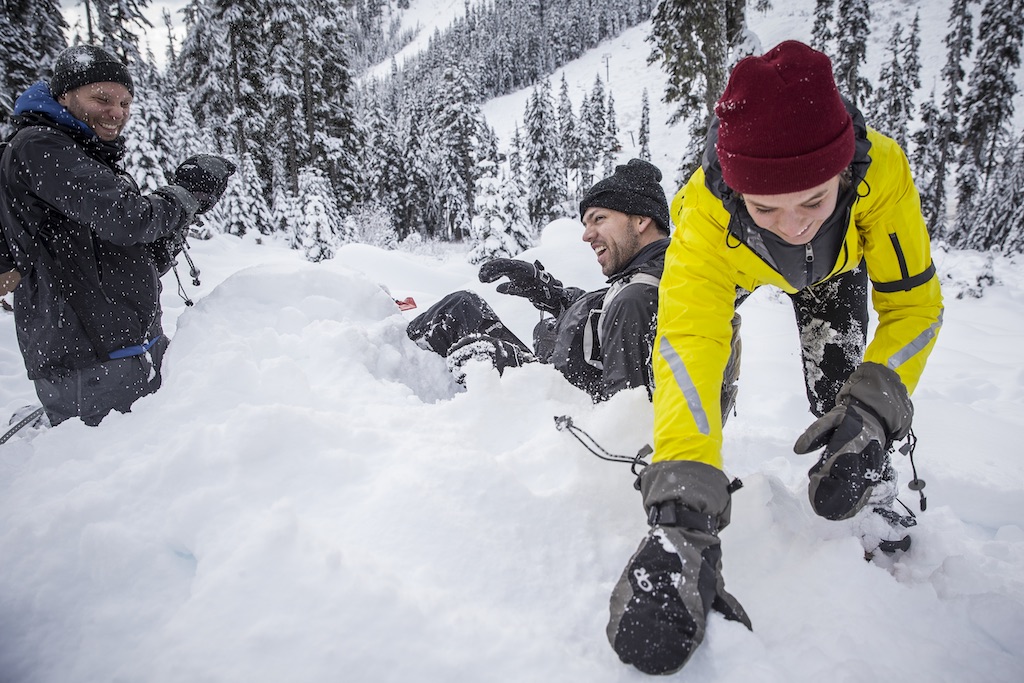 Weather is an essential piece missing from an indoor workout. Indoors, the temperature is regulated. Outside, well, Mother Nature is in charge. A simple outdoor walk can boost your mood and provide many benefits, according to the American Council on Exercise. Your body has to adapt to the colder temperature and work hard to keep you warm. Have you noticed how cold you are at the start of winter, and how by mid-winter, 30°F is no big deal? That’s because your body produces more brown fat (known as brown adipose tissue) when cold becomes the norm, and that brown fat actually burns calories to create heat and to maintain your body temperature. It’s your own internal heater and may improve your metabolism, according to a 2014 study by the National Institutes of Health.
Weather is an essential piece missing from an indoor workout. Indoors, the temperature is regulated. Outside, well, Mother Nature is in charge. A simple outdoor walk can boost your mood and provide many benefits, according to the American Council on Exercise. Your body has to adapt to the colder temperature and work hard to keep you warm. Have you noticed how cold you are at the start of winter, and how by mid-winter, 30°F is no big deal? That’s because your body produces more brown fat (known as brown adipose tissue) when cold becomes the norm, and that brown fat actually burns calories to create heat and to maintain your body temperature. It’s your own internal heater and may improve your metabolism, according to a 2014 study by the National Institutes of Health.
Strap On Snowshoes
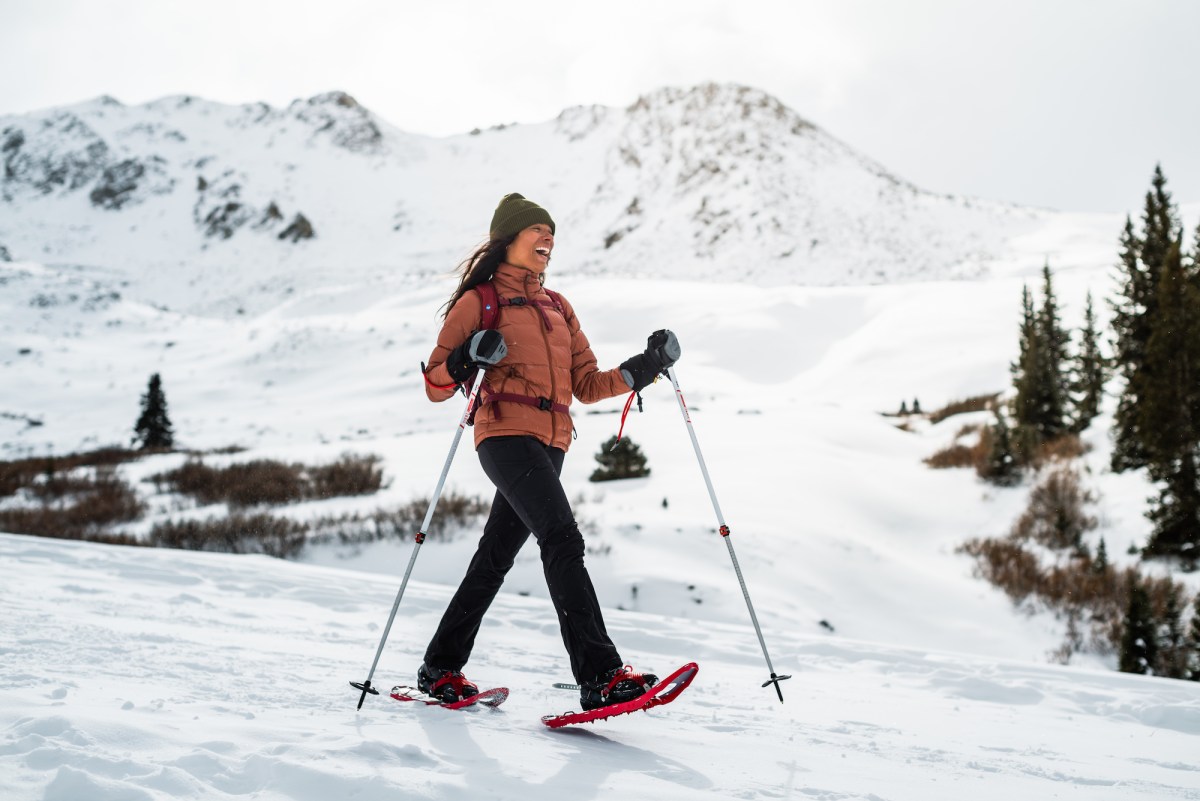
Photo Credit: Andrew Bydlon
Ski resorts may be have limited capacities this winter, with continued pandemic restrictions, so consider escaping to nature on snowshoes. It requires little technical expertise; you can snowshoe in a park or on a trail—just be sure to check avalanche danger before you head out (learn more in Snowshoeing for Beginners). You just may find a quiet pocket of wilderness to call your own.
Try a New Type of Skiing
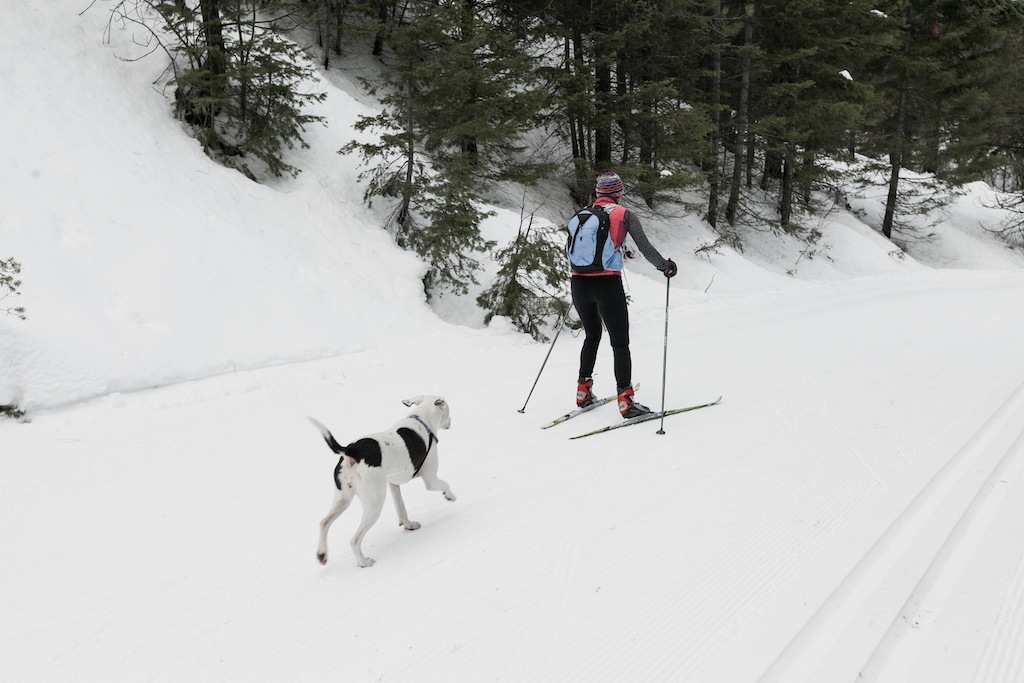 If you always downhill ski, reserve a day for the quiet hush of a cross-country ski trail. If you only ever do a meditative skate ski, take on the adrenaline-filled rush of an alpine day.
If you always downhill ski, reserve a day for the quiet hush of a cross-country ski trail. If you only ever do a meditative skate ski, take on the adrenaline-filled rush of an alpine day.
Skis differ in width and weight depending on the sport, and use varied muscle groups, not to mention the effort your body puts into staying warm. Cross-country enthusiasts could even switch between classic and skate skis. (Learn more about the differences in cross-country skiing techniques). Mix it up, and take on a new ski challenge.
Go Sledding
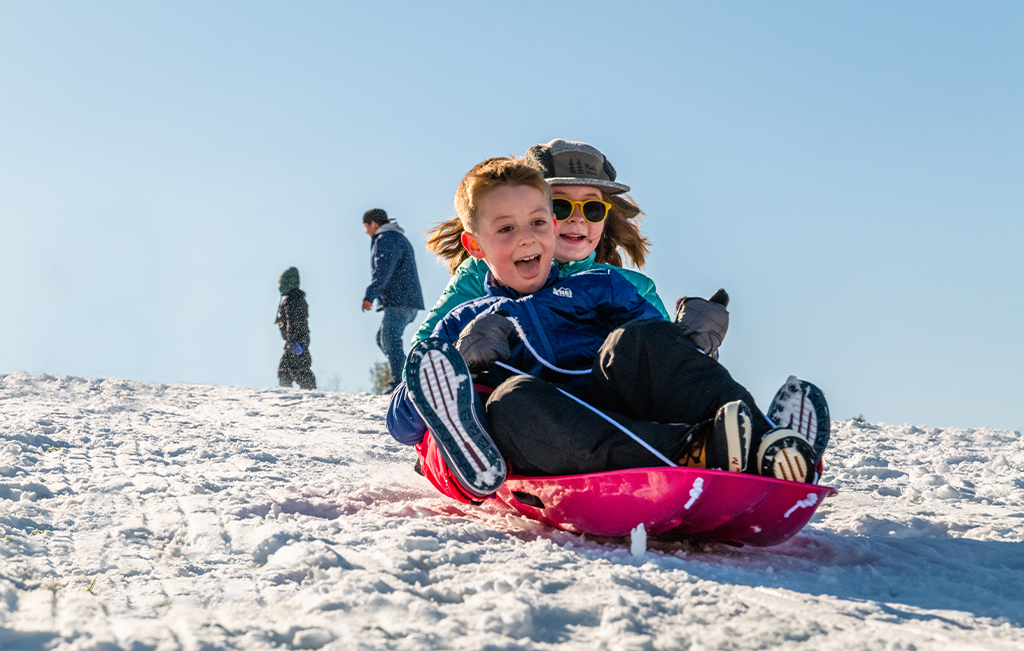
Photo Credit: Andrew Bydlon
Sledding incorporates all the best parts of nature in winter—cold temperatures, inclines and snow. And if you’ve ever dragged a bundled-up kid sitting on a sled up a snowy hill, you know how tough and sweaty this move is. Combine repeatedly pulling a sled up a hill, rolling around in the snow and laughter, and this might be the most ideal aerobic winter workout of all.
Get on the Ice
If you can find a place to ice skate outside, seize the chance. You will likely have to get artful at dodging falling children, while also mastering the fine art of staying upright on two metal blades. Regardless, you’ll have fun, and it’s an activity that easily involves everyone. Don’t forget the hot chocolate at the end.
